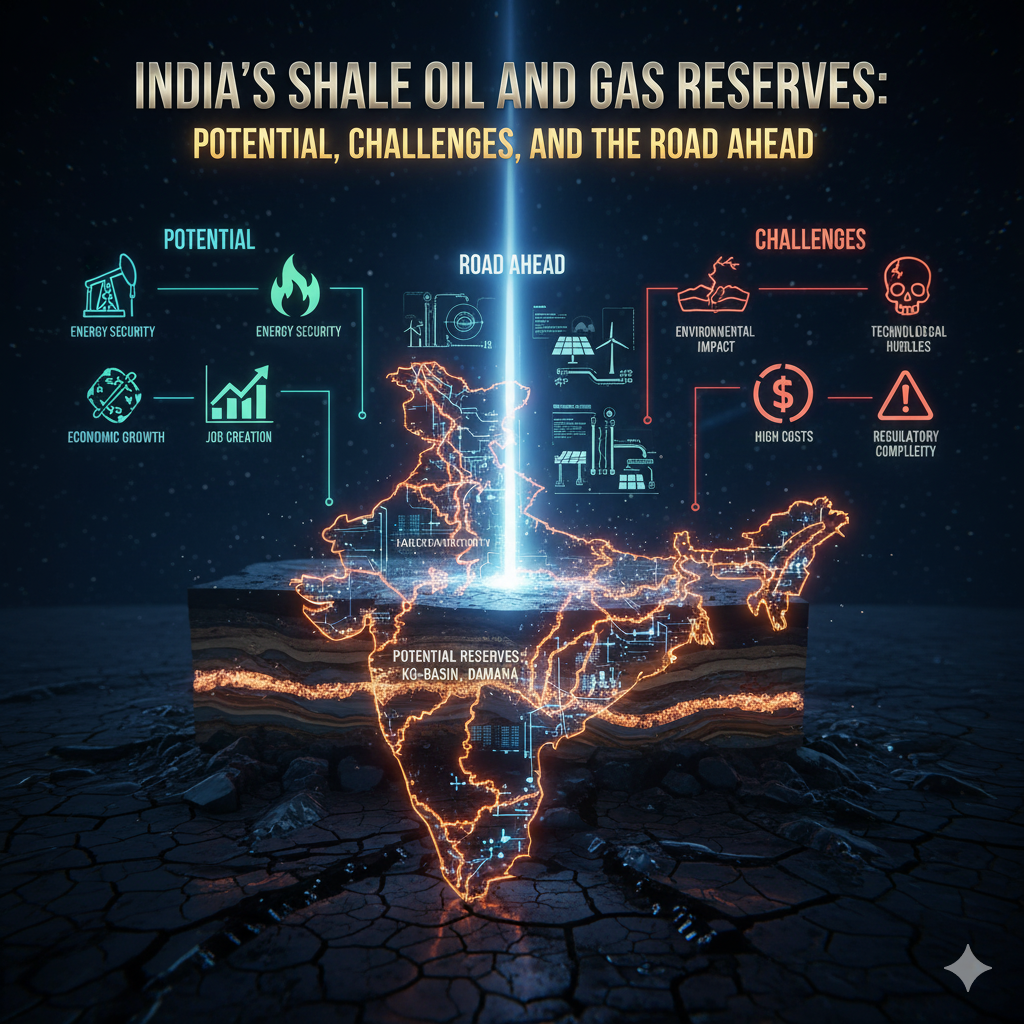Introduction
India is a country with a diverse hydrological profile, ranging from the snow-fed Himalayan rivers to the monsoon-dependent peninsular rivers. Floods, especially during the monsoon season, have long been considered a major natural hazard, causing loss of life, property, and agricultural productivity. According to the National Disaster Management Authority (NDMA), floods affect more than 40 million people annually in India and cause damages worth billions of rupees.
Despite their destructive potential, floods are essentially large-scale flows of freshwater with immense potential. If properly harnessed, these floodwaters can be transformed into a sustainable resource for irrigation, domestic water supply, groundwater recharge, and inland navigation. India’s flood-prone rivers—like the Ganga, Brahmaputra, Godavari, Krishna, and Mahanadi—offer opportunities to integrate flood management with developmental objectives.
This essay explores ways in which floods can be converted into a sustainable source of irrigation and all-weather inland navigation, highlighting technological, structural, and policy measures suitable for India’s context.
1. Understanding Floods and Their Potential
1.1 Nature and Causes of Floods in India
Floods in India occur due to a combination of meteorological, hydrological, and anthropogenic factors:
- Monsoon rainfall: India receives ~80% of its rainfall during the southwest monsoon (June–September). Sudden heavy rainfall often leads to riverine floods.
- Snowmelt: Himalayan rivers experience flooding due to rapid snowmelt in spring and early summer.
- Tropical cyclones: Coastal regions face storm surges and heavy rains, contributing to floods.
- Land use changes: Deforestation, urbanization, and encroachment reduce natural water absorption, increasing flood intensity.
- River morphology: Siltation, embankments, and narrowing of river channels exacerbate flooding.
1.2 Floods as a Resource
Floodwaters carry large volumes of freshwater, sediments, and nutrients. If harnessed efficiently:
- They can recharge aquifers and maintain groundwater levels.
- Deposited sediments enhance soil fertility, especially in floodplains.
- The flow can be utilized for hydropower, navigation, and irrigation systems.
- Floodwater retention can mitigate droughts in the dry season, ensuring year-round water availability.
2. Flood-Based Sustainable Irrigation
India’s agriculture heavily depends on monsoon rainfall, making flood-based irrigation a potentially transformative approach.
2.1 Traditional Flood Irrigation Systems
- Barrage-fed canals: Historical systems like the Ganges Canal and Brahmaputra anicuts used floods to divert water for irrigation.
- Floodplain farming: Farmers in Assam and Bihar historically used seasonal floods to irrigate and fertilize rice paddies.
- Tank systems in South India: These capture monsoon floods in reservoirs to support irrigation during dry months.
2.2 Modern Flood Harnessing Techniques
2.2.1 Floodwater Storage Reservoirs
- Construction of multi-purpose reservoirs on rivers can store floodwaters.
- These reservoirs supply irrigation canals, domestic water, and industrial water.
- Example: The Hirakud Dam (Mahanadi) and Tehri Dam (Ganga) manage floods and provide irrigation.
2.2.2 Check Dams and Percolation Tanks
- Small check dams in flood-prone areas slow down river flow and store water for irrigation.
- Percolation tanks enhance groundwater recharge, ensuring wells and tube wells remain productive.
- Example: Rajasthan and Gujarat have successfully implemented check dam networks to convert floods into irrigation sources.
2.2.3 Floodplain Canals and Diversion Channels
- Channels constructed along riverbanks divert excess floodwater to agricultural lands.
- Controlled flooding can reduce erosion and deposit nutrient-rich silt, improving crop yields.
2.2.4 Pumping and Storage Systems
- Floodwater can be pumped from rivers into elevated storage tanks or ponds, which then supply irrigation canals during dry seasons.
- Solar-powered pumps are increasingly used for sustainable operation.
2.3 Crop Planning and Water Management
- Flood-tolerant crops: Rice, sugarcane, and certain pulses thrive under temporary inundation.
- Rotation systems: Floodwater irrigation followed by dry-season crops ensures year-round productivity.
- Water budgeting: Integrating floodwater storage with irrigation schedules reduces wastage and ensures equitable distribution.
3. Floods for All-Weather Inland Navigation
India has navigable river networks exceeding 14,500 km, but inland waterways are underutilized. Flood management can enhance all-weather navigation as follows:
3.1 Challenges in Inland Navigation
- Seasonal variations cause shallow river sections, restricting navigation during the dry season.
- Siltation and sandbar formation hinder boat movement.
- Floods, while destructive, increase river depth and discharge, potentially supporting navigation.
3.2 Strategies to Convert Floods into Navigable Water
3.2.1 Flood Channelization
- Designating controlled flood channels ensures that peak flows can be used for navigation without damaging settlements.
- Example: Flood bypasses in Bihar allow the Ganga’s overflow to temporarily widen navigable channels.
3.2.2 Flood-Based Reservoir Management
- Reservoirs and dams regulate river discharge during floods, maintaining minimum depth for navigation throughout the year.
- Hydropower and navigation objectives can be integrated to manage seasonal water levels.
3.2.3 Dredging and Silt Management
- Floodwaters deposit silt, but strategic dredging maintains channel depth and width for navigation.
- Sediment management also enhances fertility of adjoining floodplains, serving dual purposes.
3.2.4 Integration with National Waterways
- India’s National Waterways (NW-1 to NW-6), including Ganga-Bhagirathi-Hooghly and Brahmaputra rivers, can benefit from floodwater regulation for year-round navigation.
- Embedding floodwater management in National Waterways plans ensures cost-effective inland transport, reducing reliance on road and rail transport.
4. Technological Innovations
4.1 Real-Time Flood Monitoring
- Remote sensing, satellite imagery, and IoT sensors help track floodwater volume and flow patterns.
- Real-time data allows optimal diversion to irrigation canals and navigation channels.
4.2 Automated Flood Control Structures
- Automated gates in barrages and dams regulate floodwater release for irrigation or navigation.
- Adaptive management reduces spillover risks and water loss.
4.3 Flood Forecasting and Early Warning Systems
- Modern forecasting tools predict monsoon floods and flash floods, enabling preemptive water diversion.
- Farmers can plan crop planting and irrigation schedules accordingly, enhancing food security.
4.4 Multi-Purpose Infrastructure
- Dams, barrages, and embankments can serve irrigation, flood control, navigation, and hydropower generation simultaneously.
- Example: Tehri Dam provides irrigation, hydroelectricity, and regulated flood flow for downstream agriculture.
5. Policy and Institutional Measures
5.1 Integrated Water Resource Management (IWRM)
- Holistic management ensures floodwater, river ecosystems, and agricultural needs are balanced.
- Coordination between central agencies (CWC, IWAI) and state water boards is crucial.
5.2 Community Participation
- Local communities can manage floodplain irrigation networks, check dams, and pond systems.
- Participatory approaches ensure equitable water distribution and maintenance.
5.3 Investment in National Waterways
- Government policies like Jal Marg Vikas Project (JMVP) focus on developing NW-1 for all-weather navigation using regulated flood flows.
- Encouraging private-public partnerships for inland water transport can enhance efficiency.
5.4 Environmental Safeguards
- Floodwater diversion and storage must consider wetland conservation, biodiversity, and downstream ecosystems.
- Sustainable practices include minimum environmental flows and eco-sensitive design of canals and barrages.
6. Case Studies and Best Practices
6.1 Assam and Brahmaputra Basin
- Seasonal floods inundate large tracts, affecting livelihoods.
- Local initiatives have used floodwater channels to irrigate rice paddies and support inland navigation.
6.2 Bihar and Ganga Floodplains
- Flood bypasses and embankments redirect excess water to irrigation canals and National Waterway NW-1.
- Flood-based farming practices enhance soil fertility and reduce dependence on chemical fertilizers.
6.3 Kerala and Coastal Flood Management
- Rainwater harvesting ponds and flood diversion canals store monsoon water for dry-season irrigation.
- Integration with backwater navigation channels supports tourism and inland transport.
7. Benefits of Flood-Based Irrigation and Navigation
- Enhanced water availability for agriculture, reducing reliance on groundwater.
- All-weather inland navigation, lowering transport costs and carbon emissions.
- Soil fertility improvement due to silt deposition.
- Disaster mitigation, as controlled floodwater reduces damage to settlements.
- Renewable hydropower potential, when combined with flood management.
- Sustainable rural development, through employment and infrastructure growth.
8. Challenges and Solutions
8.1 Challenges
- Flood unpredictability and intensity can overwhelm storage and diversion systems.
- High investment costs for infrastructure development.
- Coordination among multiple states and river basins is complex.
- Environmental concerns if ecosystems are disrupted by water diversion.
8.2 Solutions
- Implement flood forecasting, early warning, and adaptive management.
- Promote small-scale check dams, percolation tanks, and decentralized storage.
- Strengthen institutional coordination and community participation.
- Adopt eco-sensitive engineering designs to minimize environmental impact.
Conclusion
Floods, traditionally viewed as disasters, can be transformed into a strategic resource for sustainable irrigation and all-weather inland navigation in India. By combining traditional knowledge, modern technology, and integrated water management, India can:
- Provide year-round irrigation for agriculture, enhancing food security.
- Develop inland water transport networks, reducing transport costs and emissions.
- Improve groundwater recharge and soil fertility.
- Support rural development, livelihoods, and disaster mitigation.
Harnessing floods requires a holistic approach, integrating infrastructure, policy, technology, and community participation. With climate change increasing the frequency and intensity of floods, such strategies are not only practical but imperative for sustainable water resource management in India.




